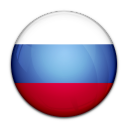My reason for veganism
The first question I get asked once I tell someone I’m vegan is “Why?”
My answer is: “For the animals, my own health, and the health of our planet.”
I find it a bit weird that I have to explain why I choose veganism since I don’t ask them why they choose to eat meat and dairy, but anyways…
As I wrote in my first post, My Vegan Journey, I went vegan for the animals and because I was convinced it could also help me get skinny after reading Skinny Bitch. I did lose some weight although I was mostly a junk food vegan. I ate Oreos, soy ice cream, potato chips, and plenty of mock meats. Basically, for the first year I lived off of anything that was on PETA’s Accidently Vegan Food List. I drank and smoked copious amounts too as long as it was vegan. No Honey Jack Daniels or Guinness Beer for me, but thanks to Barnivore’s Vegan Beer, Wine, and Liquor Guide I had plenty of other options. I wasn’t concerned about what I was eating so much as long as it wasn’t a byproduct of animal cruelty. By no means was I a perfect vegan, but being vegan in and of itself was a huge step to take as I didn’t even know a single other vegan person and lived in a college town where most of my peers lived off of pizza and beer.
It wasn’t until I watched Forks Over Knives for the third time that I saw a shift in my reason for veganism: My Health. I was suddenly more concerned about the food choices I made beyond whether or not it was vegan. The film showcases the research of Dr. T. Colin Campbell in which he was able to conclude that heart disease, type 2 diabetes, and many forms of cancer could be prevented and often reversed by adopting a whole foods, plant-based diet. I’m not sure why it took me so long to understand how important this research was to the future of my own health but I’m so glad I finally did.
I have watched my mother go through multiple treatments and surgeries for various types of cancer my entire life. She has beaten it over and over again yet it always comes back. For this reason, I have normalized cancer. I have always thought of cancer as something bad but kind of like the flu or a cold it always eventually goes away. When I was younger, I thought that like my mother, I would probably eventually get cancer and eventually it would also go away.
I no longer feel like accepting cancer is okay. Especially when I know I can prevent it simply by changing what I eat. As they advocate in the film, I now follow more of a whole foods plant- based vegan diet, focusing on fruits, vegetables, nuts, seeds, grains, and legumes. I no longer am so quick to grab something extremely processed or oily, and vegan “junk food” has became more of a treat or indulgence.
At the beginning of this post I listed the reasons why I am vegan: For the animals, my own health, and the health of our planet. When I watched Cowspiracy at a screening in San Diego is when I realized just how impactful the vegan diet is on the health of our planet. In watching the film I learned that:
2,500 gallons of water are needed to produce 1 pound of beef and 1,000 gallons of water are required to produce 1 gallon of milk. 55% of water consumed in the US is for animal agriculture but only 5% of water consumed in the US is by private homes.
This means that if you’re not flushing your toilet or only taking 60-second showers to try to save water, you aren’t really helping the planet as much as you could be just by going vegan.
82% of starving children live in countries where food is fed to animals, and western countries eat the animals yet we are currently growing enough food to feed 10 billion people.
Wait, aren’t there approximately 7 billion people in the world?
Meaning that if the food we grow didn’t go to feeding the animals that western countries eat, we could potentially end child starvation.
Each day, a person who eats a vegan diet saves 1,100 gallons of water, 45 pounds of grain, 30 square feet of forested land, 20 pounds CO2 equivalent, and one animal’s life.
The bottom line is that a vegan diet has the potential to protect our planet’s atmosphere, oceans, rainforests, wildlife, and humanity. So if you consider yourself an environmentalist, which by definition is:
“A person who is concerned with or advocates the protection of the environment.”
Then the best thing you can do to protect our planet is simple: GO VEGAN.
The sources of all of these facts can be found at http://www.cowspiracy.com/facts/
Being vegan means so much to me and I admire every single person who also has found the vegan path. However each person’s path is different and there is no such thing as a perfect vegan. We all make mistakes, we all stumble, and some of us even fall. With writing this blog I hope to continue my path of becoming a stronger vegan: For the animals, my own health, and the health of our planet.
My vegan journey
When I was 6 years old my favorite meal was chips and dip. Any chips and any dip really, but I remember at one point being partial to Cool Ranch Doritos with cottage cheese. When I was in the 5th grade I would walk home from school to our apartment building located next to a Carl’s Jr. Almost everyday I would stop in at the Carl’s Jr. and buy a Spicy Chicken Sandwich for $1.07. Like most Americans, I was raised on the Standard American Diet (SAD) consisting of meat, dairy, refined grains and lots of sugar. My parents were never heavy meat eaters but they did enjoy whatever was cheap and convenient. This meant a lot of fast food and processed frozen meals.
I don’t remember the day I decided to stop eating meat. I know I was in middle school, so I must have been only been 12 or 13. I’m not even sure how I got the idea. My childhood best friend was up for the challenge with me though. I went home and told my parents I wasn’t eating meat anymore. After that moment, nothing changed, nothing substantial at least. I continued following the SAD diet, simply only removing obvious meat products which I already didn’t eat much of anyways.
My friend wasn’t able to stick with vegetarianism, but for some reason I did. It was easy for me, as most of my favorite foods had nothing to do with meat and no one was pressuring me to eat any meat. I would eat a Caesar salad, a cheese pizza, a bean burrito, or a Cup of Noddle at lunch and for dinner, my parents began purchasing Morning Star products for me to enjoy. By the end of High School, I was severely anemic due to an iron deficiency. After a visit to the emergency room I was referred to a nutritionist who of course strongly recommended I reintroduce meat into my diet.
I went off to college and remained a vegetarian. I attended a large university with several dining halls and loads of vegetarian options. I took an iron supplement and began regularly testing my blood levels. I even met another vegetarian who lived next door to me.
My new vegetarian friend and many of my other new friends were all more aware of their weight and appearance than I was. I knew I wasn’t skinny or athletic, especially since I had never played any sports, but I felt okay. My friends began dieting and exercising and so did I. At one point I even joined by friends on a low carb Atkins Diet where I primarily ate salads and dairy.
The Atkins thing didn’t stick, but running did. I began to love running, especially the results I saw from it. By the end of my sophomore year, I wanted more. I wanted to be skinny. In researching how to run using high intensity interval training (HIIT) for weight loss, I stumbled upon a PDF version of Skinny Bitch.
There are a lot of things the authors of Skinny Bitch credit to making us fat but one in particular caught my attention: Dairy. I had never thought about dairy as fat, until I read this:
“Breast milk can grow an 8-pound newborn into a 24-pound toddler. Sounds pretty fattening, huh? It is. By design, it is intended to allow for the biggest growth spurt of a person’s entire life. … Cows’ milk, by design, grows a 90-pound calf into a 2,000-pound cow over the course of two years. Sounds even more fattening than human milk, right? It is. It should be. … Get your head out of your ass. Milk = fat. Butter = fat. Cheese = fat. People who think these products can be low fat or fat free = fucking morons.”
This all seems like common sense to me now, but at the time I was completely blown away. As I continued reading, I learned about factory farming (WARNING: GRAPHIC DESCRIPTION!):
“Of the ten billion animals slaughtered each year in America for human consumption, the vast majority of them come from factory farms. Factory farms that raise cattle, pigs, chickens, egg-laying hens, veal calves, or dairy cows have an enormous amount of animals in a very small space. There are no vast meadows or lush, green pastures. The animals are confined inside buildings, where they are literally packed in on top of each other. Egg-laying hens are crammed into cages so small, they are unable to open their wings, and their mangled feet actually grow around the wire mesh floors. This overcrowded, stressful environment causes chickens to peck at each other and factory farm workers, so the ends of their beaks are seared off their faces using a hot knife. Pigs and cows are imprisoned in stalls so small, they are unable to turn around or lie down comfortably. Cattle are subject to third-degree branding burns and having their testicles and horns ripped out. Pigs also suffer from branding and castration, in addition to the mutilation of their ears, tails, and teeth. They all live in the filth of their own urine, feces, and vomit with infected, festering sores and wounds.”
And about Slaughterhouses (WARNING: GRAPHIC DESCRIPTION!):
““Humane” protocol calls for animals to be “stunned” before they are slaughtered. For cows, this means getting a metal bolt shot into the skull and then retracted. When done properly, using working equipment, this renders the cow unconscious. But time is money, and slaughterhouses operate at lightning speeds, some killing one animal every three seconds. Because thousands of frightened, struggling cows are not easy to stun, it is extremely common for a “stunner” to miss his mark. Panicked hogs, also difficult to “hit,” are stunned with an electric device. And if the jolt is too high, it bruises and bloodies the hogs’ flesh (bad for business). Because business comes first on factory farms, the jolt is lowered, despite the fact that it doesn’t properly stun the hogs. Stunned or not, cows and hogs are then “strung up” from the ceiling by a chain attached to their leg(s). In theory, while they dangle there, they are supposed to be unconscious. But often they are fully conscious, struggling, screaming, and fearfully staring at the workers while they have their throats stabbed open. Next, they travel along a “bleed rail,” where they should bleed to death. But again, these large, frightened, struggling, conscious animals are difficult targets and the “stickers” (workers who cut their throats) don’t always get a “good cut.” Before cows can bleed to death, they are sent on their way to the “head-skinners,” where the skin is sliced from their heads while they are still conscious. Of course, this is excruciatingly painful, and the cows kick and struggle frantically. To avoid getting injured by the struggling animal, workers will sometimes sever the spinal cord with a knife blow to the back of the head. This paralyzes the animal below the neck so that the worker is safe. But these cows can still feel their skin being sliced away from their faces. Next, their legs and head are chopped off, their entrails removed from their bodies, and then, finally, they are split in half. Often before hogs can bleed to death, they are dunked fully conscious into 140- degree scalding water to remove the hair from their bodies.”
Once I finished reading, I knew I could never consume another animal product again. I stopped sharing groceries with my vegetarian roommate, and just like that, I went vegan.





































